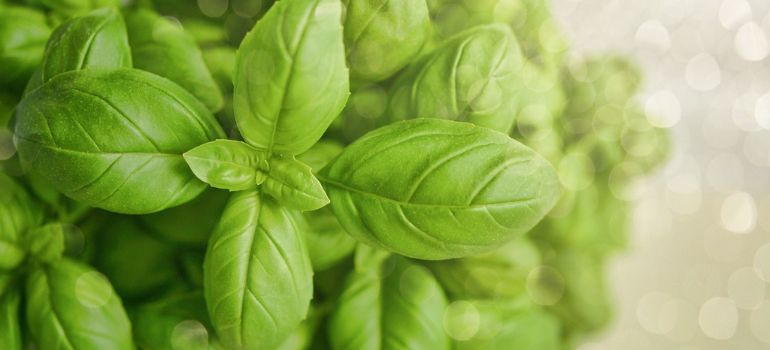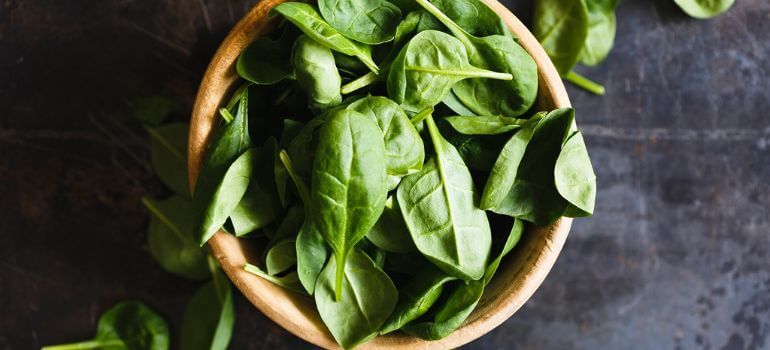In the world of culinary herbs, basil holds a special place. Its aromatic leaves add a burst of flavor and aroma to countless dishes worldwide. Two varieties, Mexican basil and Thai basil, are popular choices for their unique characteristics. In this article, we’ll delve into the differences and uses of Mexican basil and Thai basil, helping you make an informed choice for your next culinary adventure.
Introduction
Basil, a fragrant herb widely used in the kitchen, comes in various varieties. Two prominent types, Mexican basil and Thai basil, offer distinct flavors and aromatic profiles. Let’s explore these herbs in more detail to better understand when and how to use them.
Origins and Cultivation
Mexican basil, scientifically known as Ocimum basilicum var. anisatum, hails from Mexico. It thrives in warm climates and is characterized by its anise-like scent. On the other hand, Thai basil, also called holy basil or Ocimum basilicum var. thyrsiflora, is native to Southeast Asia, particularly Thailand. It prefers tropical conditions and boasts a unique spicy and slightly sweet aroma.
Appearance and Aroma
Mexican basil features bright green leaves with a smooth, glossy texture. Its aroma is reminiscent of licorice or anise, making it a popular choice in Mexican cuisine. In contrast, Thai basil has pointed, dark green leaves with purple stems. Its aroma carries notes of cloves and a peppery undertone, contributing to its widespread use in Thai and Southeast Asian dishes.
Flavor Profile
When it comes to flavor, Mexican basil delivers a sweet and slightly spicy taste with hints of anise. It’s often used to add depth to salsas, soups, and various Mexican dishes. Thai basil, on the other hand, offers a more complex flavor profile, featuring a combination of spicy, sweet, and peppery notes. It’s a staple ingredient in Thai curries, stir-fries, and noodle dishes.
Culinary Uses
Mexican basil and Thai basil each have their culinary niche. Mexican basil is primarily used in Mexican and Latin American cuisines, enhancing the flavors of dishes like mole sauce, pozole, and tamales. Thai basil shines in Thai, Vietnamese, and other Southeast Asian recipes, lending its unique flavor to classics such as Pad Krapow and Green Curry.
Health Benefits
Both basil varieties offer health benefits. They are rich in antioxidants, vitamins, and essential oils. Mexican basil is believed to aid digestion and reduce stress, while Thai basil is valued for its potential anti-inflammatory properties and immune-boosting effects.
Availability
The availability of Mexican basil and Thai basil can vary depending on your location. Mexican basil may be more accessible in regions with a Mexican or Latin American culinary influence, while Thai basil is commonly found in Asian markets and grocery stores.
Storage
To keep the freshness of basil intact, store it properly. Place fresh basil stems in a glass of water, cover it loosely with a plastic bag, and refrigerate. Alternatively, you can freeze basil leaves in an airtight container, preserving their flavor for several months.
Recipes Featuring Mexican Basil

- Mexican Basil Pesto: Blend Mexican basil, garlic, pine nuts, Parmesan cheese, and olive oil to create a flavorful pesto sauce.
- Salsa Fresca: Add chopped Mexican basil to your favorite salsa for an extra layer of freshness and aroma.
Recipes Featuring Thai Basil
- Thai Basil Chicken (Pad Krapow Gai): Stir-fry chicken with Thai basil, garlic, chili, and fish sauce for a spicy and aromatic dish.
- Vietnamese Pho: Garnish your bowl of pho with fresh Thai basil leaves for an authentic touch.
Pesto: Mexican vs. Thai Style
While traditional pesto is made with Italian basil, you can experiment by using Mexican or Thai basil for a unique twist. Mexican basil pesto pairs wonderfully with Mexican-inspired dishes, while Thai basil pesto complements Southeast Asian cuisine.
Cooking Tips
When working with Mexican basil and Thai basil, here are some cooking tips to get the best results:
Mexican Basil:
- Pair with Spicy Dishes: Mexican basil’s sweet and anise-like flavor is a perfect match for spicy dishes. Add it to chili, tacos, or even spicy marinades for grilled meats.
- Salsa Variations: Elevate your salsa game by using Mexican basil as an ingredient. It can bring a unique twist to traditional salsa recipes.
- Herb Butter: Mix finely chopped Mexican basil into softened butter along with some garlic for a delicious herb butter to slather on bread or use for cooking.
Thai Basil:
- Stir-Fry Sensation: Thai basil shines in stir-fry dishes. Add it towards the end of the cooking process to preserve its fresh aroma and flavor.
- Curry Companion: Thai basil is a key ingredient in Thai green and red curries. The leaves not only add flavor but also a vibrant green hue to the dish.
- Herbal Garnish: Use Thai basil as a garnish for soups, noodle dishes, and even salads. The aromatic leaves provide a burst of flavor and a pop of color.
Pairing with Other Ingredients
Both basil varieties play well with various ingredients, enhancing the overall flavor of your dishes. Here are some ingredient pairings to consider:
Mexican Basil:
- Tomatoes: Mexican basil and tomatoes are a classic combination, often used in Italian-inspired dishes like caprese salad.
- Cheese: Whether it’s a quesadilla, pizza, or pasta, Mexican basil pairs wonderfully with a variety of cheeses, such as mozzarella and Parmesan.
- Citrus: The citrusy notes of Mexican basil complement the tanginess of lemon or lime, making it an excellent addition to seafood dishes.
Thai Basil:
- Chilies: Thai cuisine often incorporates spicy chilies, and Thai basil’s peppery notes complement the heat, creating a harmonious balance.
- Coconut Milk: Thai basil works beautifully in dishes with coconut milk, as it adds a fresh contrast to the creamy richness.
- Fish Sauce: The umami-rich flavor of fish sauce pairs remarkably well with Thai basil, enhancing the overall depth of the dish.
Growing Your Own Basil
If you’re a gardening enthusiast or want to have a fresh supply of basil, consider growing your own plants. Both Mexican basil and Thai basil can thrive in your garden or on your windowsill.
Tips for Growing Basil:
- Sunlight: Basil loves sunlight. Ensure your plants receive at least 6-8 hours of direct sunlight per day.
- Well-Drained Soil: Plant basil in well-drained soil that’s slightly acidic. It’s essential to keep the soil consistently moist but not waterlogged.
- Pruning: Regularly prune your basil plants to encourage bushy growth and prevent them from flowering too soon. Pinch off the top leaves to encourage lateral growth.
- Harvesting: You can start harvesting basil leaves once the plants reach a decent size. Harvest by pinching off individual leaves or cutting entire stems.
- Pest Control: Keep an eye out for common basil pests like aphids and whiteflies. Regularly inspect your plants and treat them as needed.
By growing your basil, you’ll have a fresh and abundant supply to use in your culinary creations, ensuring that your dishes are bursting with flavor.
In conclusion, Mexican basil and Thai basil may share the same name, but they offer unique flavors and culinary experiences. Whether you’re preparing Mexican cuisine or Thai dishes, these herbs can elevate your cooking and leave your taste buds craving for more. So, go ahead, explore their distinct qualities, and infuse your dishes with the delicious essence of basil.
Conclusion
In the world of culinary herbs, Mexican basil and Thai basil stand out for their distinct flavors and aromas. Whether you’re cooking up a Mexican feast or crafting a Thai masterpiece, the choice between these two herbs can make a significant difference in your dish’s final flavor profile. Embrace their unique characteristics and elevate your culinary creations to new heights.
FAQs
While Mexican basil can be used as a substitute, it won’t replicate the exact flavor of Thai basil. Thai basil’s distinct aroma and taste are essential to many Thai dishes.
You can find basil seeds for both varieties at local nurseries, online seed stores, or specialty herb shops.
Both basil varieties have been used in traditional medicine for their potential health benefits, but it’s essential to consult with a healthcare professional for specific advice.
Yes, you can dry basil leaves by hanging them in a cool, dry place or using a food dehydrator. Store the dried leaves in an airtight container for extended use.
Fresh basil can add a unique twist to desserts like basil-infused ice cream, basil-lemon sorbet, or basil-infused syrup for drizzling over fruits or pastries.
Enhance your culinary adventures by experimenting with these two basil varieties. Whether you choose Mexican basil or Thai basil, your taste buds are in for a delightful journey.



